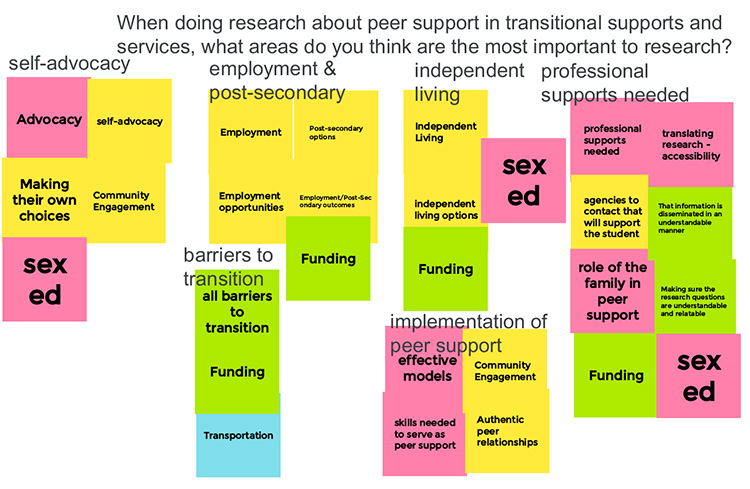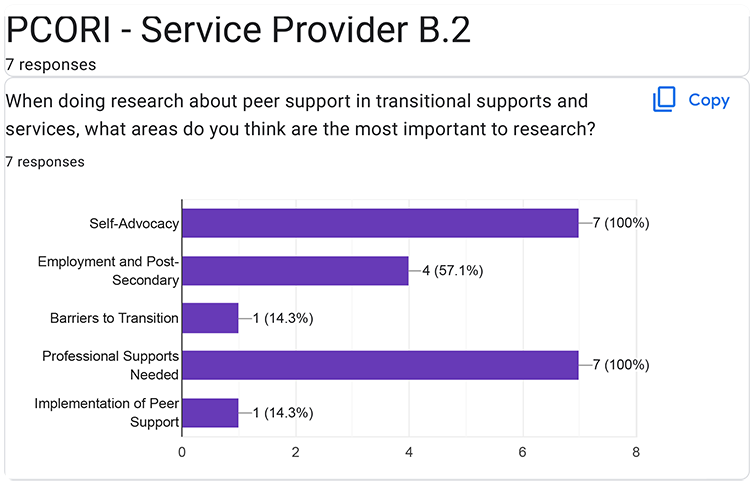Focus Groups

Listen to this section:
The research team led 4 focus groups with 28 people:
- 9 young adults with IDD
- 4 parents of young adults with IDD
- 8 transition researchers
- 7 transition service providers
The team used different tools to make it fun and easy for the participants to share their thoughts about transition and peer support. The team used Nominal Group Technique in the focus groups.
Nominal Group Technique includes these steps:
- Participants were asked questions like:
- What do you think is important for a person with IDD to learn and know as they transition into adult roles and activities?
- How can peer support help another peer to transition into adult roles and activities?
- When doing research about peer support in transition supports and services, what areas do you think are the most important to research?
- Participants came up with their main ideas and concerns for transition research using peer support. Participants shared 3-5 ideas anonymously by adding a note to an interactive online whiteboard called Google Jamboard. Participants could also share their ideas out loud or write them in the Chat.

- The whole group talked about the ideas. They grouped similar ideas together and named the groups.
- The group names were added to a Google Form. Then participants voted anonymously on their 3 main priorities or concerns.

- After the vote, the group discussed the 3 main priorities or concerns. They talked about if they agreed with the results and if there was anything missing.
- If necessary, the team added or changed the group names in a new Google Form. Then the participants voted 1 more time. The results were recorded as the final vote of ideas for that question.
Go to the next page to learn more about the Comparison of results.